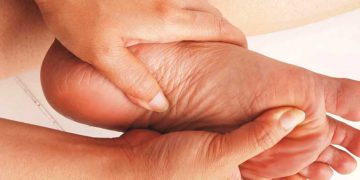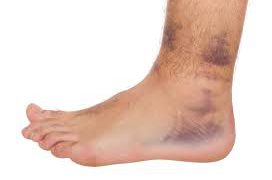Diabetic neuropathy is a common complication of diabetes. It is responsible for damage to the nerves in diabetics persons and are responsible for sensations such as pain.
You might be wondering who wants to feel pain but the ability to feel pain and other sensations are essential otherwise you might be injured but don’t even know it until it is too late (e.g. when the wound is infected).
There are four types of diabetic neuropathy: peripheral, autonomic, proximal and focal.
Diabetic Peripheral Neuropathy
Diabetic peripheral neuropathy mostly affected the outer extremities of the body such as the arms, legs and feet.
It is as a result of damage to the nerves in the outer extremities that results in a loss of sensation.
This lack of sensation increases the risk of injuries. The feet are definitely more at risk since you probably don’t check it every day.
The problem is, if there is a lack of sensation in the feet injuries and sores may go unnoticed.
Sometimes when diabetics do realise that their feet have been injured it is often too late.
At this time infections would have already developed. This is the number one reason why some diabetics face the prospect of their feet being amputated.
Symptoms of Diabetic Peripheral Neuropathy
may include:
• Tingling
• Numbness
• Burning
• Pain in toes, fingers, arms and legs
Diabetic Autonomic Neuropathy
Diabetic autonomic neuropathy is nerve damage that tends to affect the internal systems and organs such as the digestive system (especially the stomach), urinary system, blood vessels, and sex organs.
Symptoms of Diabetic Autonomic Neuropathy
Digestive system:
• Bloating
• Diarrhoea
• Constipation
• Heartburn
• Nausea
• Vomiting
• Feeling full after small meals
Other symptoms:
Impotence
Vaginal dryness
Hypoglycaemic unawareness
Diabetic Proximal Neuropathy / diabetic amyotrophy
Diabetic proximal neuropathy or diabetic amyotrophy causes pain in the bigger muscles of the body and tend to affect one side only.
Symptoms of Diabetic Proximal Neuropathy / Diabetic Amyotrophy
• Pain or weakness in the legs (normally in the thigh).
• Pain in one side of the body ( hip, buttock or thigh)
• Muscle in the leg felt weak.
• Problems moving from sitting to standing or climbing stairs
Diabetic Focal Neuropathy
Diabetic focal neuropathy can also appear suddenly and affect specific nerve groups.
It most often affects nerves in the head, torso, or leg, causing muscle weakness or pain.
Symptoms of Diabetic Focal Neuropathy
may include:
• double vision
• aching behind the eye
• paralysis on one side of the face (Bell’s palsy)
• severe lower back pain or pain in the pelvis area
• pain in the front of a thigh
• Pain on the outside of the shin or the inside of the foot.
• Severe chest or abdominal pain
Focal neuropathy is painful and unpredictable and occurs most often in older adults with diabetes.
People with diabetes sometimes tend to also develop nerve compression problems (entrapment syndromes).
Carpal tunnel syndrome is a very common type of entrapment syndrome and causes numbness and tingling of the hand and sometimes muscle weakness or pain.
These are some other scary diabetic complications:
Diabetic Retinopathy (eye disease)
Diabetic Nephropathy (kidney disease)
Diabetic Ketoacidosis (high level of acidic ketone bodies in the blood)
Diabetic gastroparesis (stomach illnesses)
Atherosclerosis (vessel disease)
Reference:
For further information on diabetic neuropathy visit NIDDK @
http://diabetes.niddk.nih.gov/dm/pubs/neuropathies/#focalneuropathy



















